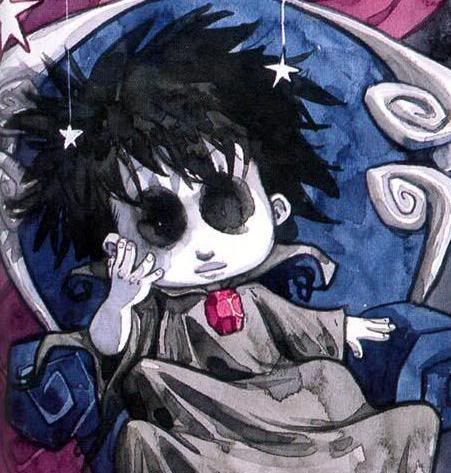Unculloteable
 Matagal ko nang gustong malaman kung anong magiging itsura ko kapag ang aking pinakamamahal na buhok ay kulot. At noong sabado, nakamit ko na ang kapita-pitagang mithiin na ito! (Sensya na kaibigang moonlight, di na kita nahintay)
Matagal ko nang gustong malaman kung anong magiging itsura ko kapag ang aking pinakamamahal na buhok ay kulot. At noong sabado, nakamit ko na ang kapita-pitagang mithiin na ito! (Sensya na kaibigang moonlight, di na kita nahintay)Asa 614 kasi kami nun, nagpapahinga sandali pagkatapos mag-sketch ng banner para sa "Copa", nang dumating ang kengdot. Me bertday din kasi kaming pupuntahan sa xvv. Nang ilabas na ni keng ang kanyang curling iron ay di ko napigilang humingi ng pabor sa kanya. Sa madaling sabi, nagpakulot ako, ayos!
Mga isang oras ding trinabaho ang aking hairdo, nageksperimento pa kami kung anong mas ayos, yung maliliit na "kinky" kulot, yung malalaking pa-wavy, at kung ano-ano pa. Sabi ko gusto ko yung magmumukha akong hudyo (syempre pa).
Habang niluluto ang buhok ko (it burns!!!
Matino naman ang kinalabasan... Ang natural na pagka-wavy (ie pagkagulo-gulo) ng buhok ko ay naemphasize pa, lalo na sa likod. Nagmukha naman daw akong... anime character, hehe. Ayos naman nang tignan ko sa salamin. Okay na sana talaga kaso...
Nung pumipili pa lang kami ng istilo e binalaan na ako ni keng na kailangan pang shampuhin ng mabuti ang buhok ko bago matanggal ang kung ano mang magiging epekto ng aming gagawin (kaya mag-isip daw ako ng mabuti bago kami mag-umpisa). Subalit... Dati pa ay alam ko nang balik-ayos(/gulo/whatever) ang buhok ko kaya medyo dumapo na sa isipan kong baka hindi tatagal ng ganon yung aking bagong "do". Pero di naman namin naisip na ilang pasada lang ng kamay ko e mawawalang bisa na ang pinaghirapan ni keng... Ilang oras ang itinagal ng pagkakulot ko? Lagpas lang ng konti sa 20 minutes (san ka pa?
Mukhang hindi talaga kami compatible ng (pekeng) kulot, dibadibs???

[I am unculloteable.]



